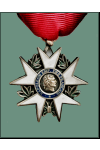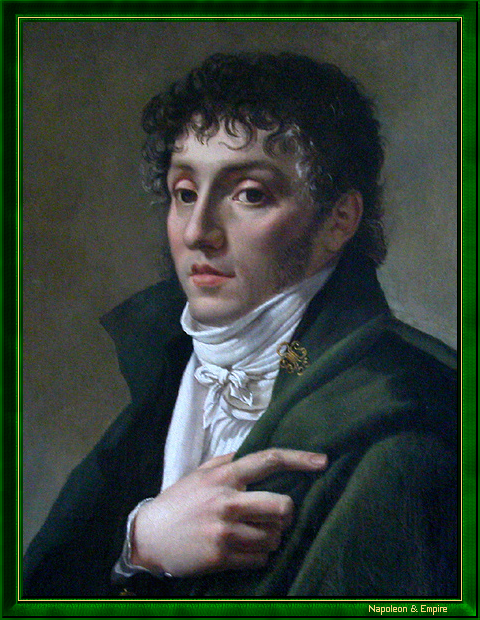Etienne Méhul
Knight of the Légion d'honneur
Pronunciation:

In 1779, Etienne Méhul left his hometown of Givet in the Ardennes, where he was born on June 24, 1763 to a father who was a wine merchant. With the recommendations of his first teachers, he went to Paris, where he became a pupil of Jean-Frédéric Edelmann, and was encouraged by Baron Gluck.
His first great success came in 1790 with Euphrosine ou le tyran corrigé at the Comédie-italienne (which became the Opéra comique in 1793). The following year, he confirmed his success with Cora et Alonzo, performed at the Opéra six years after he had proposed it.
The Revolution gave him the opportunity to compose a number of songs and hymns, the most famous of which is Chant du départ.
He soon became a professor at the Institut National de Musique, inspector of studies at the Conservatoire when it was founded in 1795, and was admitted to the Institut the same year, the first musician to achieve this honor.
His output remained abundant throughout the Directoire, Consulate and Empire periods. He produced Le jeune Henri in 1797 - a politically awkward work, but whose overture was a concert triumph - Elena in 1803, Uthal and Les Aveugles de Tolède in 1806, Joseph, his greatest success, in 1807 and Le Prince troubadour in 1813.
On good terms with Napoleon Bonaparte, he was awarded the Légion d'honneur in 1804, and published songs, hymns and cantatas to the glory of the regime. He was commissioned to write the cantata performed at the wedding of Napoleon and Marie-Louise of Austria.
His catalog also includes religious music, piano sonatas and half a dozen symphonies, the earliest of which, from 1797, is unnumbered. The first, performed by Felix Mendelssohn in 1838 and 1846, made a favorable impression on Robert Schumann. Together, they were among the most impressive of their time, and echoes of one of them can be heard in Ludwig van Beethoven's Ninth Symphony.
Méhul was the most influential French composer of the early 19th century. His influence was felt by a number of Romantics, starting with Carl-Maria von Weber, who would always claim it as his own, using one of Joseph's romances as the theme for his piano variations as early as 1812. Mendelssohn and, above all, Hector Berlioz, who would later proclaim himself the heir to his elder brother, also appreciated him greatly.
He died of tuberculosis in Paris on October 18, 1817. His tomb is in the Père-Lachaise cemetery, 13th division .
"Etienne Méhul" peint par Antoine-Jean Gros (Paris 1771 - Meudon 1835).

A great orchestrator, Méhul was also one of the first to use the leitmotiv technique, which he employed in 1799 in Ariodant.
Philately: In 1963, to commemorate the bicentenary of his birth, Les Postes de la République Française issued a 0.20 + 0.10 F stamp bearing the effigy of Etienne Méhul .
Two of his last symphonies were only rediscovered in 1979.